2030-2039 Contents
2030 - Global population is reaching crisis point | AI is widespread | USA is declining as a world power | AIDS, cancer and a plethora of other degenerative diseases are curable | India becomes the most populous country in the world | Full weather modeling is perfected | Emerging job titles of today
2031 – Web 4.0 is transforming the Internet landscape | Married couples are a minority
2032 - Manned mission to Mars | 4th generation nuclear power
2033 - Hypersonic airliners are entering service | Holographic wall screens | IT's share of the US economy reaches 15% | Lung disease in China has killed over 80 million by now
2035 - Ice-free summers in the Arctic | Self-driving vehicles are widespread | Holographic recreations of dead people | Robots are dominating the battlefield | Artificially-grown meat is available to consumers
2036 - Bionic eyes that surpass human vision
2037 - Quantum computers are becoming available
2038 - Teleportation of complex organic molecules
2039 - Full immersion virtual reality | Universal translators are widespread | Nanotech fabrics are ubiquitous | Australia's national symbol, the Koala bear, faces extinction | US population reaches 400m
2000-2009 | 2010-2019 | 2020-2029 | 2030-2039 | 2040-2049 | 2050-2059 | 2060-2069 | 2070-2079 | 2080-2089 | 2090-2099 >
2030
Global population is reaching crisis point
Explosive population growth - along with continued industrialisation of emerging economies - is having a catastrophic impact on food, water and energy supplies.*
In the early 2000s, there were six billion people on Earth. By 2030, there are an additional two billion, most of them from poor countries. Humanity's ecological footprint is such that it now requires the equivalent of two whole Earths to sustain itself. Farmland, fresh water and natural resources are becoming scarcer by the day.
The extra one-third of human beings on the planet means that energy requirements have soared, at a time when fossil fuel supplies are declining. A whole series of conflicts is now unfolding in the Middle East, Asia and Africa, at times threatening to spill over into Europe. With America involved too, the world is teetering on the brink of a major global war.
There is the added issue of climate change, with CO2 levels now reaching 450 parts per million. There are signs that a tipping point has been reached, which is manifesting itself in the form of runaway environmental degradation. Nature's ecosystems are beginning to collapse on a scale rarely witnessed in Earth's history.
The accelerating magnitude of these problems is leading to a rapid migration from traditional fossil fuels to renewable energy. Advances in nanotechnology have resulted in vastly improved solar power. This is enabling photovoltaic materials to be added to almost every new building. Maglev wind power is beginning to replace traditional wind turbines, allowing for much greater capacity in a smaller footprint. Energy supplies in general are becoming more localised and self-sufficient, while standards of power conservation have risen across the board. Clean coal is a further option now available. Meanwhile, 4th generation nuclear is close to being perfected and fusion power is only a decade or two away.
Although humanity is weening itself off fossil fuels, they remain the principal energy source in 2030 - accounting for nearly half of all power production.
Another issue which governments have to contend with during this time is the ageing population, which has seen a doubling of retired persons since the year 2000. People are living longer, healthier lives. Huge budget increases have been made for state pensions, but the funding is spread over such a large number of people that the overall effect is a decreased income for the average senior citizen. Retirement ages are increasing: in America, Asia and most European countries, many employees are forced to work into their 70s.
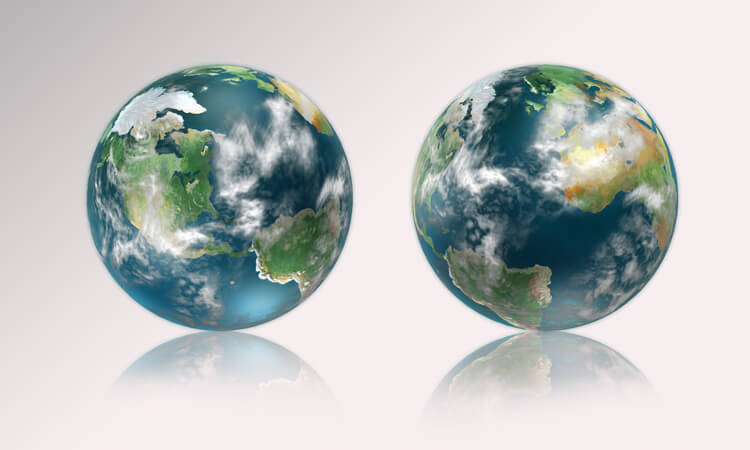
© Kevin Giszewski | Dreamstime.com
AI is widespread
Technology is accelerating exponentially. By 2030, the pace of change is so great that it will seem as if an entire century of progress has already occurred in the first three decades of the 21st century.* Scientific breakthroughs appear to be happening with startling frequency now - especially in the fields of computing, nanotechnology, medicine and neuroscience.*
Workplaces are becoming highly automated, with tremendous improvements in speed, productivity and efficiency. Ever-increasing use of portable, wireless devices has led to the evolution of near-paperless offices. Meanwhile, the need for hyperfast exchange of information has created enormous demand for video conferencing - a trend reinforced by significant reductions in air travel.
Many companies are downsizing their administrative departments and replacing them with AI. This is particularly true of call centres, and other service-based roles, where customers often deal face-to-face with "virtual employees" based on automated software. Crude versions of these systems had been utilised as far back as the 1990s - activated by simple voice commands over the telephone - but now they are presented onscreen as fully conversant digital entities.

© Andrejs Pidjass | Dreamstime.com
Though lacking much in the way of personality, these sentient programs talk with "perfect" voices and are very pleasant on the ears.* They have a multitude of menu options and can usually deal with almost any query - however specific or unusual - thanks to their advanced voice and facial recognition software.
As competition increases, these virtual employees become a powerful marketing tool in the bid to provide the best possible customer service. In addition to mainstream companies, the adult entertainment industry gains a huge advantage from them, with enormous demand for their services. Research and development into artificial intelligence (and related hardware/software) increases greatly during this period. An added benefit of interacting with these virtual people is the complete elimination of caller queuing, since there is no need for physical staff anymore.
With AI beginning to play a stronger role in society, concerns arise of a "technological singularity", as forecast by Ray Kurzweil and others. These fears prove to be exaggerated for now, in a manner similar to the Millenium Bug.
USA is declining as a world power
A ballooning budget deficit, record levels of personal debt, and a declining manufacturing base, combined with excessive military spending and related activities (such as increased homeland security and surveillance) greatly damaged the US economy over the previous few decades. This caused long term damage to the country's standing.
The continued industrialisation of China and India has led to phenomenal growth in these and other Asian countries, with many millions being lifted out of poverty. Shanghai has eclipsed Wall Street as the leading financial centre.
Despite these changes, the US still retains its super power status - but every leading economist now acknowledges that it won't be the only country holding such influence for much longer. China, India and the EU are becoming major players on the world stage. What this means for geopolitical stability is the subject of much debate around this time, but many agree that a group of superpowers rather than a single hyperpower will mean increased conflict.

© Colin Nixon | Dreamstime.com
AIDS, cancer and a plethora of other degenerative diseases are curable
The combination of stem cell research, synthetic genomics, nanotechnology and other breakthroughs has led to cures for a wide range of illnesses by now - including AIDS/HIV, the majority of cancers, motor neurone disease, arthritis and diabetes. Although Parkinson's and Alzheimer's have yet to be fully understood, dramatic progress is now being made thanks to reverse-engineering of the human brain.*
The growth of information technology in medicine has played an enormous role here. Ongoing, exponential gains in the scale, capacity and price performance of computer hardware (doubling annually) have transformed the ability to scan, analyse and decode the human body.
The tools to reprogram the information processes underlying biology are gaining a further boost from the development of strong AI. This is being used to greatly accelerate research efforts. Automated software programs now combine the subtlety of humans with the speed, memory and knowledge sharing of non-biological intelligence.*
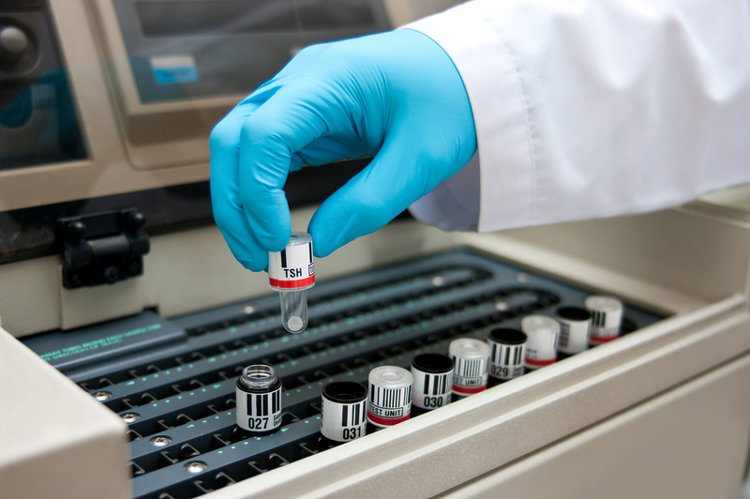
© Sebastian Czapnik | Dreamstime.com
India becomes the most populous country in the world
Around this time, India overtakes China to become the most populous country in the world. By the middle of this decade it will be home to over 1.5 billion people. The gap between these two countries will continue to widen, with China's population actually declining from this point onwards.
As part of a climate change deal, foreign investment within India has enabled the country to build more than a hundred gigawatts of solar power facilities: enough to supply 200 million people with clean energy.* Together with its growth as a major IT centre, this has further improved its social and economic standing. At the same time, however, the effects of climate change are beginning to take hold. Droughts are posing serious challenges to food and water production.
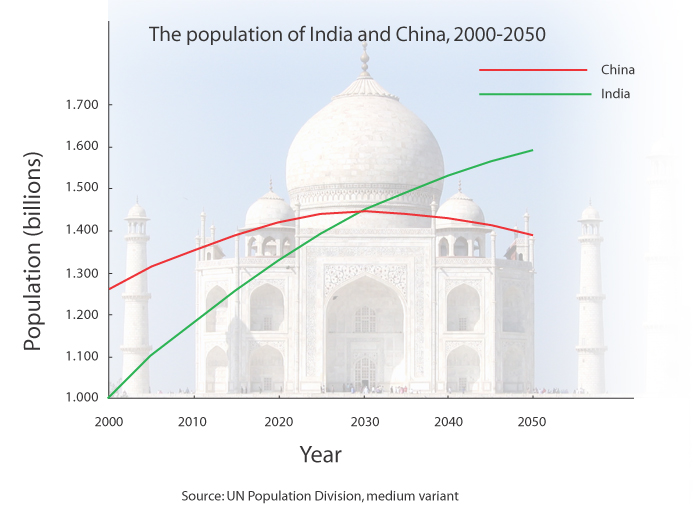
Full weather modeling is perfected
Zettaflop-scale computers are now available for scientific establishments. These systems are a thousand times more powerful than those of 2020 and a million times more powerful than those of 2010.
One field seeing particular benefit during this time is meteorology. Weather forecasts can be generated with 99% accuracy over a two week period.* Satellites can map wind and rain patterns in real time at extraordinary resolution - from square kilometres in previous decades, down to less than 10 square metres now.
Long-term global warming and climate modeling can also be achieved in far greater detail than ever before.
Emerging job titles of today
Some of the new job titles becoming widespread in 2030 include the following.*
- Alternative Vehicle Developer
- Avatar Manager / Devotee
- Body Part Maker
- Climate Change Reversal Specialist
- Memory Augmentation Surgeon
- Nano Medic
- Narrowcaster
- 'New Science' Ethicist
- Old Age Wellness Manager / Consultant Specialist
- Quarantine Enforcer
- Social 'Networking' Officer
- Space Pilot / Orbital Tour Guide
- Vertical Farmer
- Virtual Clutter Organizer
- Virtual Lawyer
- Virtual Teacher
- Waste Data Handler
2031
Web 4.0 is transforming the Internet landscape
Further convergence of the online and physical world has led to the emergence of "Web 4.0". Semantic analyzing programs have evolved into new forms of AI, performing a huge range of automated tasks for business, government and personal use. Running on massively parallel networks, these applications hunt for textual and visual data, combining the most subtle capabilities of humans (such as pattern recognition) with ways in which machines are already vastly superior (such as speed and memory).*
In addition to serving as highly advanced search engines, they are playing a major function in the real world - gathering information from the array of sensors, cameras and other tracking devices now present in the environment, on vehicles, and even on people themselves.
Although privacy and civil liberties issues are being raised, a new generation of IT is emerging which promises to bring enormous benefits to society. Crimes are faster and easier to solve thanks to these intelligent virtual agents; transport and logistics are smoother and more efficient; resources can be managed and distributed more accurately.
In addition, practically every physical document in existence has now been digitally encoded, backed up and archived online. This includes full copies of all books, journals, manuscripts and other literature ever published – forming a complete repository of human knowledge going back thousands of years. These documents can be retrieved and analysed using real-time speech commands, translated from any of the world's 6,000 languages and accessed via 3D holographic imaging.
Web 4.0 is also democratising the Internet more than ever before. News agencies are finding themselves increasingly outmoded by bloggers and other social media when it comes to speed and accuracy of information.
Married couples are a minority
By now, marriage in the West has been reduced to the status of a lifestyle choice enjoyed by a minority, rather than an essential institution of society. This trend, which began in the 1980s, has seen the married population shrink from almost 50% of adults in 2009, to just 41% now.*
Increasing pressures of work and money, together with the general stresses of the outside world (including the ongoing energy crisis), are putting an ever-greater strain on couples. The decline of religious institutions has also played a part here. Unmarried partnerships no longer carry the stigma they once had.
In addition, increasing numbers of people either working at home alone, or living with their parents, are making it difficult for some to meet potential partners.
Another contributory factor is an explosion in the use of virtual reality - and other such technologies - which has led to increased individual isolation. People of all ages spend increasingly large amounts of their time engaged in highly immersive online experiences, requiring little or no interaction with the outside world.
Of those who are married, the number of children per couple has declined considerably in Western societies. Combined with increasing numbers of Muslim immigrants (who have much higher numbers of children), this is beginning to radically alter the demographics in some countries.
2032
Manned mission to Mars
Perhaps the most long-overdue space mission in history is finally undertaken during this time. A full six decades after the Apollo landings, technology is now vastly improved - particularly with regards to IT and telecommunications.
The costs involved are still enormous, however. Rather than going it alone, NASA is forced to share the burden with other nations.
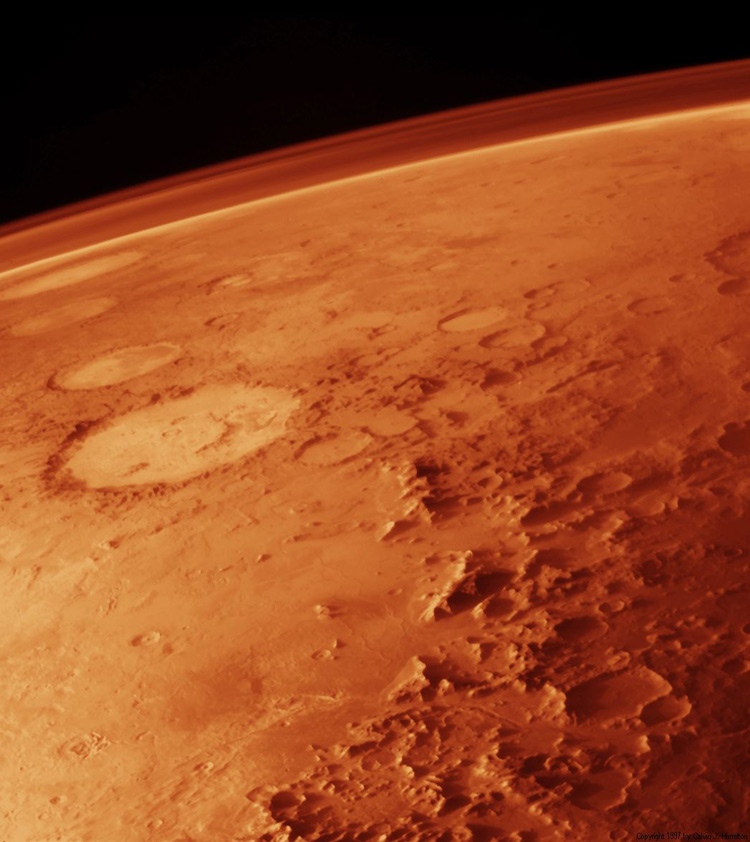
4th generation nuclear power
By this date, 4th generation nuclear power plants are commercially available.* They utilise a system of tiny ball bearings, rather than large fuel rods. They are a major improvement over previous generations, for the following reasons:
- It is physically impossible for them to have a runaway chain reaction, as happened with Chernobyl. No error, human or otherwise, will ever produce a meltdown.
- The uranium fuel is only 9% enriched. This makes it impossible to be used in terrorist nuclear weapons.
- The nuclear waste is much easier to dispose of.
- They are highly economical. Electricity can be generated more cheaply than oil or gas power, even when the decommissioning costs of the stations are taken into account.
For these reasons, nuclear power becomes a lucrative industry from the 2030s onwards. China and India, in particular, take advantage of this enhanced power source.
Solar and wind power has greater long term potential, however, due to the finite supply of uranium.
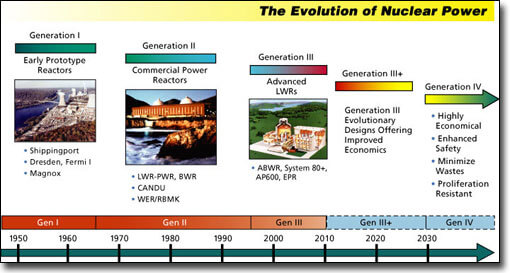
2033
Hypersonic airliners are entering service
Following decades of research and development, a new generation of aeroplanes are entering commercial service.*
These aircraft have a cruising speed of Mach 5 - or about 3,800 mph - enabling them to fly from Europe to Australia in less than four hours. With a range of more than 20,000km (12,000 miles) they can perform this journey without refuelling and have excellent subsonic and supersonic fuel efficiency, thus avoiding the problems inherent in earlier supersonic aircraft. Furthermore, and perhaps more importantly, they are environmentally friendly. Being powered by liquid hydrogen, their only waste products are water vapor and small amounts of nitrous oxide.
Another advantage is that, while the 150 metre-long designs are much bigger than previous jets, they are actually lighter than Boeing 747s and can utilise conventional airport runways. They have moderate take-off noise, too.
In many ways, they are the spiritual successor of Concorde.
However, they do not have windows. The heat generated by traveling so fast makes it difficult to install windows that are not too heavy. One solution to this problem has been the installation of flat screen displays, showing images of the scene outside.*
Holographic wall screens
Conference halls, office headquarters, modern art galleries and other such environments now have access to holographic wall screens. These are substantially larger versions of the TV projectors which have been in use since the 2020s. These upscale models are becoming so large that they can fill entire rooms. At this stage, they remain far too expensive for mainstream use in the home (except for luxury apartments owned by the rich and famous). However, they are a relatively common sight in workplaces, where video conferencing is playing an increasing role in business; and in entertainment venues such as movie theatres, nightclubs and stadiums.
Times Square in New York, Piccadilly Circus in London, and Shibuya in Tokyo now feature spectacular advertisement displays, with graphics appearing to literally "jump out" of the screen.

© Robert Mizerek | Dreamstime.com
IT's share of the US economy reaches 15%
The trend in IT growth is shown below. This has been consistent since at least the 1970s and there are no signs of it slowing down. Major industries fueling this growth now include biotechnology, nanotechnology, leisure and entertainment (especially VR) and the development of AI.
By the end of the century, over a quarter of America's GDP may be based on IT, as the demand for physical goods and services decreases, being replaced with virtual and digital goods and services online.
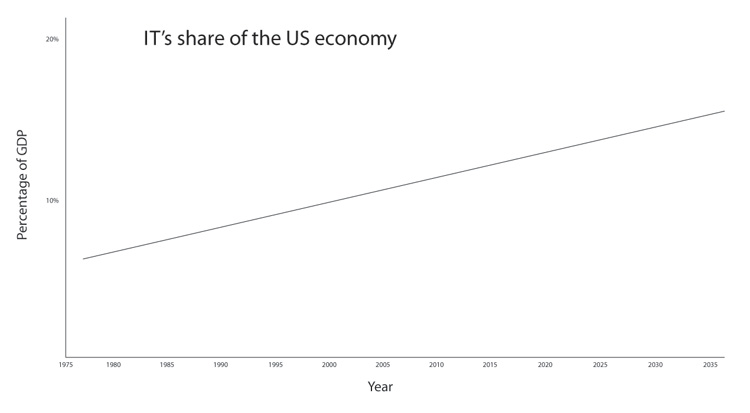
Lung disease in China has killed over 80 million by now
This has resulted from the combined long term effects of (a) pollution; 20 of the 30 most polluted cities in the world are in China, (b) huge numbers of smokers; around 50% of adults, and (c) the widespread practice of burning wood or coal at home for cooking and heating; over 65% of the population.*
China has begun switching to cleaner fuels by this time, however - and is implementing a new programme of taxation, better health education and tobacco advertising bans. This begins to reduce the proportion of deaths from lung disease from around this time onwards.

Credit: Suicup
2035
Ice-free summers in the Arctic
Due to global warming, the Arctic is now completely free of ice during summer months. A dramatic decline in sea ice coverage was observed during 2007. This trend continued over the subsequent decades, the process accelerated by the increasing surface area of water - being darker, the sea absorbed more of the Sun's heat compared to reflective white ice.
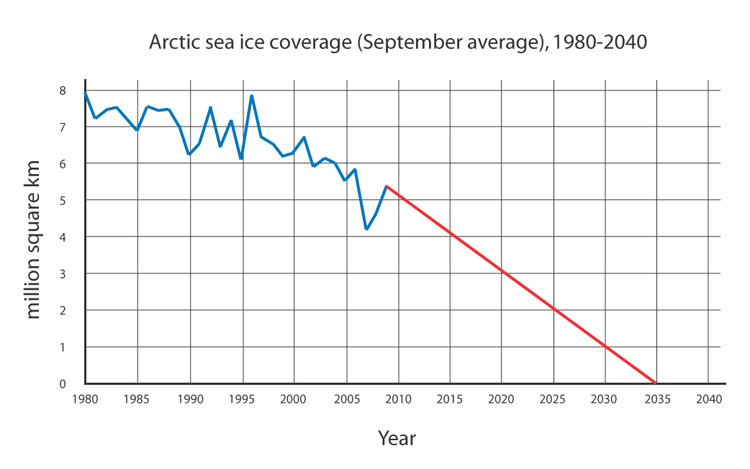
Source: NASA
Self-driving vehicles are widespread
In many developed countries - especially in the EU - a new generation of self-driving vehicles is being rolled out. These use a combination of advanced GPS, AI and lane-changing technology to carry passengers to their destination automatically. As well as improving road safety, these cars are fitted with the latest hydrogen-based technology to make them energy efficient and reduce their impact on the environment.
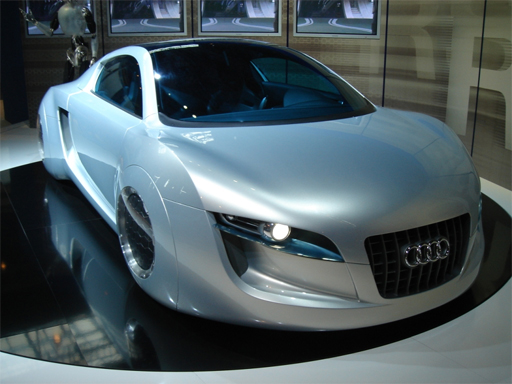
Credit: Florian K
Holographic recreations of dead people
Throughout this time many dead celebrities, presidents and historical figures from the past are "resurrected" online, via the immense AI and supercomputing powers now available. This phenomenon is aided by the recent human brain simulations that have been made possible. Data mining of every single word ever spoken, written, or otherwise recorded by the person is undertaken, then analysed to recreate their character traits and emotions. This allows the construction of a highly accurate "shell" personality, surrounding a generic "core" program, run as an entirely independent AI simulation.
The project sparks much controversy when first announced (especially among the religious community) but soon gains momentum, as a whole host of actors, musicians, artists, scientists, politicians and other individuals from the past are made available.* Advanced holographic techniques - combined with real-time audio-visual interaction - make them appear as lifelike as any other person alive in the world today.
This form of computerised resurrection is soon extended and made possible for ordinary citizens wishing to preserve a loved one in digital form; though once again, it is more popular among the non-religious (and the process is generally less accurate, since the average person tends to leave behind less data, written words, video recordings and other information for use in constructing the programs). The technology involved is also expensive. It is used only by the rich for now - or in certain public locations such as museums, galleries and other venues.

Robots are dominating the battlefield*
A variety of mobile, autonomous fighting machines are appearing on the battlefield now. Guided by advanced AI, they can aim with inhuman precision and come equipped with powerful sensors, GPS and thermal vision. They can be deployed for weeks or months at a time if necessary, without need for rest or maintenance. They have other advantages too - such as a complete lack of remorse or fear; no need for training, or retirement payments, or other such costs. These machines are being used in a wide variety of conflicts (especially food/energy/resource-related) where they spread terror and confusion through the ranks of their enemies.
In fact, only the poorest or most desperate enemies are fielding human troops against this new and deadly force. This is giving the US an advantage in battlefield situations, allowing the country to regain some of the power and influence it has lost in previous decades - at least with regards to armed conflicts.
The most advanced robot models come with self-repairing nanobot systems and immunity to EMP attacks. Some can even turn themselves invisible through the use of metamaterials.
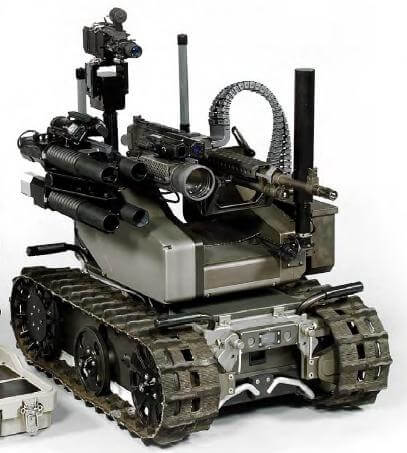
Credit: Qinetiq
Artificially-grown meat is available to consumers
A solution to the ongoing food crisis becomes available near the end of this decade. Advances in tissue engineering have made it possible to actually "grow" meat, using just single animal cells.* Having been in development for over 30 years, it has now reached the stage where it can be safely mass-produced and made available for public consumption.*
The meat itself has a number of benefits. It is unusually pure, clean and healthy - whilst retaining the original flavour, texture and appearance of traditional meat. It can also be produced without harm or cruelty to animals, being just a lump of cultivated cells. Perhaps most importantly, it has far less impact on the environment.
It is also much cheaper than ordinary meat, which is especially beneficial to developing countries, many of which have seen their agricultural systems ravaged by climate change.
Like GM crops and other such radical advances, a number of political and psychological hurdles stood in the way of its development. This meant its introduction to the mainstream was delayed by several years. However, the aforementioned crisis in farming - along with endorsements from animal welfare groups - gave added impetus and eventually pushed it through.
2036
Bionic eyes that surpass human vision
Although yet to become mainstream, a bionic eye is now available that not only restores sight, but actually exceeds normal human vision. This breakthrough has been made possible due to exponential advances in sensor technology and computer power.
The first generation of these implants began appearing in the late 2010s.* They were somewhat crude initially - providing only a very pixelated view of the world and requiring the use of glasses frames for mounting the cameras.
This latest generation, however, is such high resolution that it now exceeds the sensitivity of natural human eyes. Gigapixels of resolution can be captured and transmitted to the optic nerve into the visual centres of the brain. Externally mounted cameras are no longer necessary - these have been miniaturised by a factor of thousands and incorporated within the eye itself.
Bionic eyes will soon begin to offer more than just ordinary sight. They will be capable of providing infrared vision, for instance, for improved health and safety in night-time situations. They will include video recording capabilities, serving as the ultimate in portable webcams. The convergence of Web 4.0 and augmented reality will enable users to receive detailed information on their surroundings, just by looking around them.*
The cost of these implants is also dropping substantially, thanks to exponential improvements in price performance. Having been tens of thousands of dollars in earlier decades, they will soon be available for less than $100.

© Dmitriy Kiryushchenkov | Dreamstime.com
2037
Quantum computers are becoming available
Certain government agencies, universities and research institutes now have access to this revolutionary form of technology, which offers spectacular computing speed and power on a completely different scale to anything used before. These machines work by making direct use of quantum mechanical phenomena, such as superposition and entanglement, to perform operations on data. In addition to being trillions of times faster than earlier computers, they can be made absolutely secure, too. The machines' encryption techniques are virtually unbreakable, due to the almost unimaginable number of instructions being executed simultaneously.
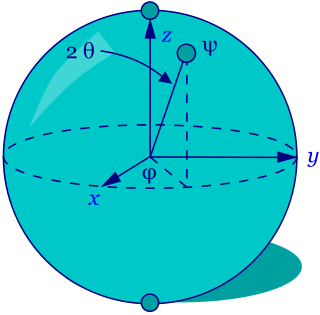
GNU Free Documentation License 1.2 / Credit: Murder of Spleens
2038
Teleportation of complex organic molecules
In the early 2000s, scientists were able to transfer particles of light (with zero mass) over short distances.
Further experiments in quantum entanglement led to successful teleportation of the first complete atom. This was followed by the first molecules, consisting of multiple atoms.
By the late 2030s, complex organic molecules such as DNA and proteins can be teleported.*

Credit: Greg L
2039
Full immersion virtual reality
Towards the end of this decade, personal computers are becoming sophisticated enough to bring full immersion virtual reality to the mainstream.*
In other words, users now have the option of actually "being" in a video game and experiencing its graphics, audio and other effects (e.g. tactile feedback) in a manner that is practically indistinguishable from the real world.
This stunning breakthrough has been achieved through exponential trends in computing over the previous decades - including a billionfold improvement in processing power and price performance, combined with a 100,000-fold shrinkage of components and circuitry.*
For the first time, human brains are actually being merged with computer intelligence. Rather than viewing games on a screen, users now experience the game from within their own nervous systems, as though it were an extension of their mind. Players undergo a simple, minimally invasive procedure to insert nanobots (blood cell-sized devices) into their bodies. These microscopic machines are self-guided towards the neurons in their brain responsible for visual, auditory and other senses. Here, they remain in a dormant state, but in close proximity to the brain cells.
When the user wishes to experience a simulated reality, the nanobots immediately move into place, suppressing all of the inputs coming from the real senses, and replacing them with signals corresponding to the virtual environment. If the user decides to move their limbs and muscles as they normally would, the nanobots again intercept these neurochemical signals - suppressing the "real world" limbs from moving, and instead causing their "virtual" limbs to move within the game. This means a user can be sitting in a fixed position, while experiencing a high degree of activity and movement.
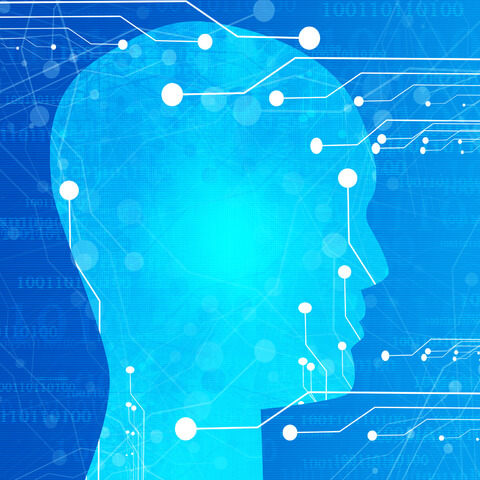
© Bram Janssens | Dreamstime.com
Although most people are initially wary of these devices, they have been around in some form since at least 2025 (eg. for medical purposes) and years of testing, security and safety measures have gone into this latest generation. Detailed regulations are now in place which cover any possible eventuality. For example, a power cut means the nanobots simply detach from the neurons - automatically returning a user to the real world - while checks are constantly performed to ensure there is no danger of being "trapped" in a virtual environment.
Furthermore, the machines are not permanent and can be removed from the body altogether if desired. In any case, it is practically impossible for them to damage nerve cells or cause any lasting damage, due to their small size and limited functionality. Over the next few years, many people come to accept them as a natural part of their bodies – just as bacteria and other small objects are part of their stomach, digestion and other internal processes.
Full immersion VR isn't just limited to games. With such huge creative scope, it is being used for a whole range of applications now: from business to education, training, healthcare, engineering, design, media and entertainment.
Tourism is being revolutionised, since people no longer have to travel great distances or spend large amounts of money to explore the sights and sounds of another location – they can simply go online. For this reason, a number of travel firms are going bust around this time, or else drastically changing their business models to account for this new medium.

© Nikolai Sorokin | Dreamstime.com
Of course, that’s not to say these online holidays are intrinsically better than the real thing. Although on a different scale of technical wizardry compared to graphics of previous decades, they are still somewhat limited in their accuracy of towns and cities. At this stage, many of them lack sufficient AI, are often sparsely populated, and miss out vital details or subtle characteristics of foreign culture... things which make real-life travel such an enriching, worthwhile experience. Decades of refinement will be needed before VR is entirely convincing.
Nevertheless, this new phenomenon is so profound in its depth of interactivity – as well as sheer convenience, accessibility and ease of use – that it presents a serious threat to old-line travel agencies.
One way that the industry adapts to this is by offering more detailed, advanced and sophisticated holiday environments, for a fee. However, this becomes only a temporary solution, as certain users find a way to pirate these programs, which are then duplicated and shared online. The problem is exacerbated by groups collaborating to form their own free/open source programs, which combine the best elements from these and others, and are easy to customise by the casual user. In some cases, "hybrid" versions of holiday destinations are being created which offer wholly new, surreal and bizarrely dreamlike experiences. One such example might be a recreation of New York with a tropical coastline, populated by characters from Star Wars.
Just as the internet led to a decline in the music industry, the same is now happening to the travel industry. From the 2040s onwards there is a massive decline in air travel and overseas holiday bookings. The effects of climate change and worsening environmental crises are also playing a part here. A growing number of citizens are choosing to stay at home, with most communication and interaction being done online. The same is true of businesses – especially with regard to meetings and conferences, which are increasingly being held in virtual settings.
One area of commerce with no such troubles is the adult entertainment industry. Full immersion VR allows users to meet and interact with people in astonishingly lifelike ways. This includes virtual recreations of glamorous celebrities and film stars…

Universal translators are widespread
On-person devices capable of instantly translating speech, text or handwriting from any of the world’s 6,000 languages are widespread by this time.* Every website, virtual environment and electronic publication now has this facility too. This is having the effect of speeding up many bureaucratic/administrative procedures in business and government – as well as improving trust and cooperation at both a national and individual level.
Nanotech fabrics are ubiquitous
Nanotech fabrics are everywhere now. They are available for a huge range of clothing, footwear and accessories, some of which are remarkable in their design. For instance, many clothes can be programmed to change their molecular structure to alter their colour, texture or style. Others have self-cleaning abilities, with micro-thin layers of disinfectant to regulate germs and dirt.
Others have more exotic properties. One such example is a material that can replicate the texture of geckos' feet. This allows people to stick to vertical surfaces, giving them Spiderman-like agility.* In addition to outdoor adventurers and climbers, a number of radical activists are making use of this. Eco-protesters for example are often seen on the news, scaling prominent buildings to unveil banners and placards. A number of government offices and corporate headquarters are being targetted in this way – raising fears of more serious incidents involving terrorists. Many companies are forced to improve their security measures.
More advanced "chameleon"-style fabric is being utilised by special forces. This comes in the form of fully-enclosing suits which change colour to match the wearer’s environment, providing a near-perfect means of camouflage.*
Australia's national symbol, the koala bear, faces extinction
By this date, the koala population in Australia has dwindled to almost nothing, due to the combined effects of drought, disease, climate change and loss of natural habitat.*

Credit: Erik Veland
US population reaches 400 million*
This compares with 309 million for the year 2010. Most of the population growth has occured in urban areas - especially in the northern states, which are more stable in terms of food and water production.
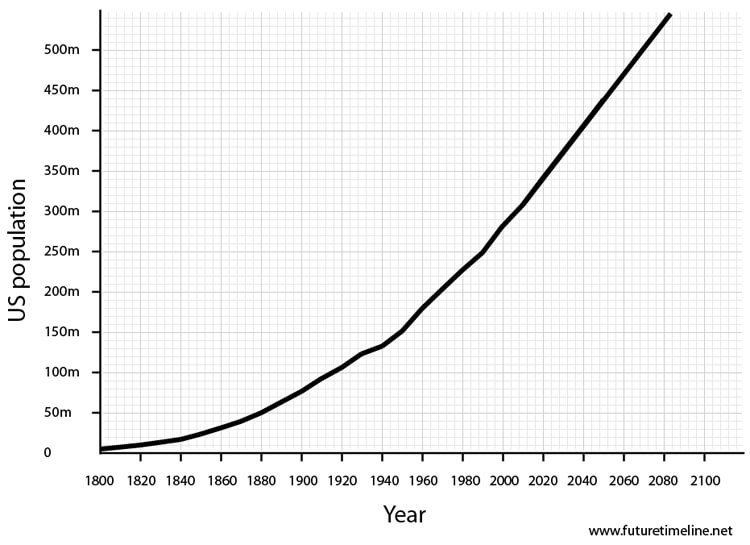
References
1 Averting a perfect storm of shortages, BBC:
http://news.bbc.co.uk/1/hi/8213884.stm
Accessed 22nd November 2009.
2 The Singularity is Near, by Ray Kurzweil:
http://www.amazon.com/Singularity-Near-Humans-Transcend-Biology/dp/0143037889/ref=sr_1_1?ie=UTF8&s=books&qid=1250947600&sr=1-1 .
Accessed 22nd August 2009.
3 Various exponential trends can be seen here, clearly showing the phenomenal rate of technological progress taking place. These charts are taken from The Singularity is Near, by Ray Kurzweil:
http://singularity.com/charts/page17.html.
Accessed 22nd August 2009.
4 Formula 'secret of perfect voice', BBC:
http://news.bbc.co.uk/1/hi/uk/7426923.stm
Accessed 16th December 2009.
5 See 2025.
6 The Singularity is Near, by Ray Kurzweil (2005)
http://www.amazon.com/Singularity-Near-Humans-Transcend-Biology/dp/0143037889/ref=sr_1_1?ie=UTF8&s=books&qid=1254172463&sr=1-1
Accessed 23rd May 2010.
7 India urged on climate change, BBC:
http://news.bbc.co.uk/1/hi/sci/tech/8232958.stm.
Accessed 2nd September 2009.
8 IDF Shanghai 2008: The Era of Visual Computing Draws Nigh, Patently Apple:
http://www.patentlyapple.com/patently-apple/2008/04/idf-shanghai-2008-the-era-of-visual-computing-draws-nigh.html
Accessed 17th March 2010.
9 Source: The Foresight Network
From an online survey conducted in August 2009.
10 Web 4.0,Trip Down the Rabbit Hole or Brave New World?, zmogo.com:
http://www.zmogo.com/web/web-40trip-down-the-rabbit-hole-or-brave-new-world.
Accessed 7th June 2009.
11 Married couples to be minority within 20 years, Daily Telegraph:
http://www.telegraph.co.uk/news/uknews/5086491/Married-couples-to-be-minority-within-20-years.html
Accessed 4th April 2009.
12 Generation IV reactor, Wikipedia:
http://en.wikipedia.org/wiki/Generation_IV_reactor.
Accessed 9th Sept 2008.
13 Reaction Engines A2, Wikipedia:
http://en.wikipedia.org/wiki/Reaction_Engines_A2
Accessed 10th October 2009.
14 China lung disease 'to kill 83m', BBC:
http://news.bbc.co.uk/1/hi/world/asia-pacific/7652140.stm
Accessed 11th August 2009.
15 This has already begun, though in a somewhat crude form, without the use of AI. See Lennon stars in TV laptop advert, BBC: http://news.bbc.co.uk/1/hi/entertainment/7801938.stm
Accessed 30th Dec 2008.
16 Coming to the Battlefield: Stone-Cold Robot Killers, Washington Post:
http://www.washingtonpost.com/wp-dyn/content/article/2009/01/02/AR2009010202191_pf.html
Accessed 9th Jan 2009.
17 Scientists aim for lab-grown meat, BBC.co.uk:
http://news.bbc.co.uk/1/hi/sci/tech/4148164.stm
Accessed 28th April 2009.
18 Wired (UK launch issue - May 2009):
http://www.wired.co.uk/wired-magazine/archive/2009/05/features/what%27s-next-the-future,-from-2009-to-249.aspx?page=2
Accessed 28th April 2009.
19 See 2019.
20 Augmented reality contact lens could create bionic eyes, theregoesdave.com:
http://theregoesdave.com/2009/09/02/augmented-reality-contact-lens-could-create-bionic-eyes/
Accessed 18th April 2010.
21 Such a feat may be possible "within a few decades", according to Michio Kaku (specialist in string field theory).
See Physics of the Impossible:
http://www.amazon.com/Physics-Impossible-Scientific-Exploration-Teleportation/dp/0307278824/ref=sr_1_1?ie=UTF8&s=books&qid=1250029787&sr=1-1
Accessed 11th August 2009.
22 Foreword to Virtual Humans, Kurzweilai.net:
http://www.kurzweilai.net/articles/art0600.html?printable=1
Accessed 20th May 2009.
23 Virtuality and reality 'to merge', BBC.co.uk:
http://news.bbc.co.uk/1/hi/technology/7258105.stm
Accessed 20th May 2009.
24 Inventions that could become part of everyday life by 2039, lawdit.co.uk:
http://www.lawdit.co.uk/reading_room/room/view_article.asp?name=../articles/2209-IA-Inventions-that-could-become-part-of-everyday-life-in-2039.htm
Accessed 10th June 2009.
25 The "Octocamo" seen in the video game Metal Gear Solid 4 shows how this technology might work.
See http://www.youtube.com/watch?v=KJIGxXg0zRo
Accessed 11th October 2009.
26 Koalas 'extinct within 30 years' after chlamydia outbreak , The Telegraph:
http://www.telegraph.co.uk/news/worldnews/australiaandthepacific/australia/6537179/Koalas-extinct-within-30-years-after-chlamydia-outbreak.html
Accessed 12th November 2009.
27 U.S. Population Projected to Hit 400 Million in 2039, prb.org:
http://www.prb.org/Articles/2008/us400million.aspx
Accessed 10th June 2009.
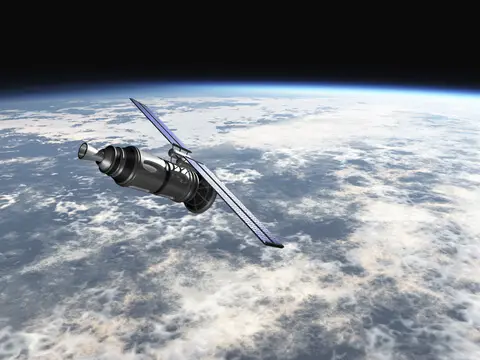
No comments:
Post a Comment